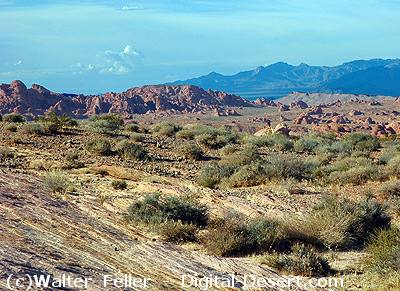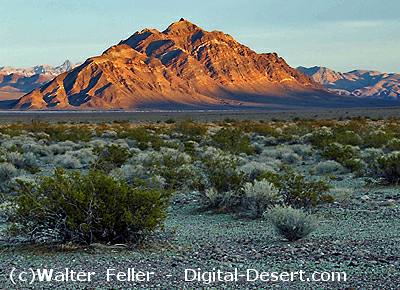Prehistoric Cultures in the Death Valley Region
Shoshonean Period, 1200 A.D.–Euro-American Contact
The Shoshonean period clearly anticipates the historic Native Americans with evidence of bow and arrow hunting, exploitation of plant resources using milling stones, and use of circular houses. The Anasazi influence faded after A.D. 1200 as a result of changes in climatic conditions, population movements, settlement patterns, social organization, and trade alignments.This northern Mojave assemblage extended from Owens Valley on the west to the Valley of Fire on the east, and is represented by sites in the Panamint Valley, a variety of sites in Death Valley, the China Ranch site, and in the Amargosa Valley.
(source - NPS)
Shoshone Indians
A much more numerous people, perhaps 8,000 strong, the Western Shoshoni occupied what is today northern and western Nevada. ...Timbisha Shoshone
The Timbisha's oral history relates that they have lived in the area since time immemorial -- and, many visitors are surprised to learn, still live in the heart of ...Southern Paiute
Paiute & Shoshoni Cultures of Death Valley
For millennia, American Indian peoples lived within the area, using the resources and lands to sustain their lives and ...Southern Paiutes in Las Vegas Valley
In southern Nevada, the cusp of the protohistoric and the historic periods is marked by the 20-year span of the Old Spanish Trail, ...
Valley of Fire

Owens Valley

Amargosa Valley